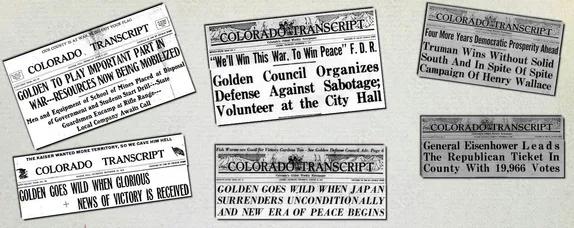Part 1 - Anniversary of an Institution
The Transcript didn’t just report on the City’s growth: it was a tireless booster, endlessly extolling the excellent climate, water, scenery, and boundless natural resources of this location. In the manner of 19th century newspapers, it didn’t hesitate to stretch a fact when describing the City’s perfections. The very first issue of the paper (December 19, 1866) assured readers that Clear Creek had tremendous water power and could power an infinite number of mills along its banks. (That may have been an overstatement for our rather small creek.)
The Transcript played an active role in attracting the Colorado School of Mines, and in keeping it, when other cities tried to snatch it away. The paper has enthusiastically covered 150 years of academic and athletic triumphs.
The Transcript wrote editorials endorsing new schools, paving the streets, improving our water supply, and building a sewer system, all the while keeping a close watch on City and County expenditures. For many years, the Transcript listed every bill and every salary that the City paid.
George West ran the Transcript from its founding in 1866 until his death in 1906. When he died, his wife Eliza became the President of the company and his son Harley became the editor. When Harley died in 1927, his wife Vera became the President. She later installed her second husband—Fleet Parsons—as editor, while she retained ownership until her own death in 1954. Fleet continued to run the paper until his death in 1959.
The Transcript building at 1115 Washington Avenue (map) was built in 1870 and thereafter was the office and printing plant for as long as the paper was in family hands.









